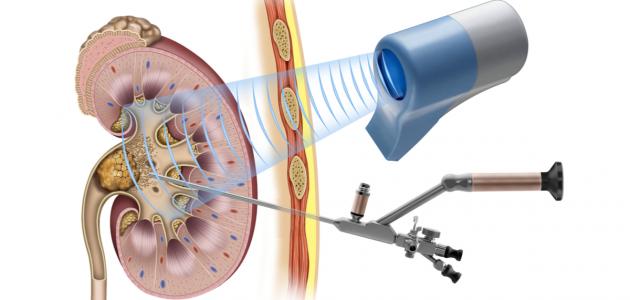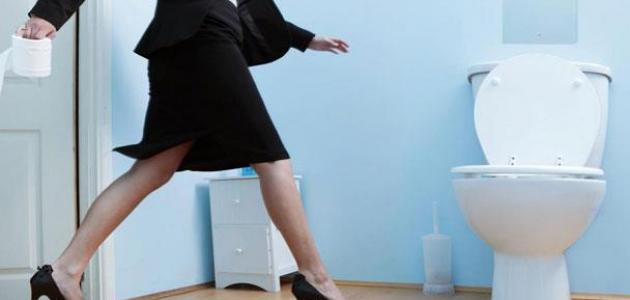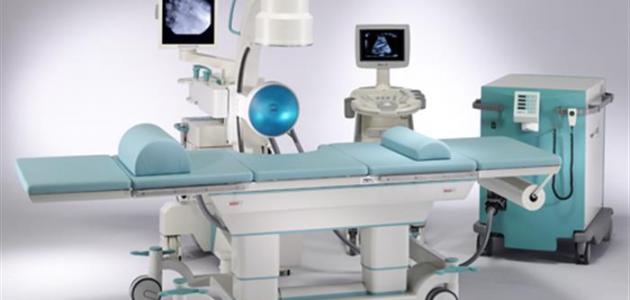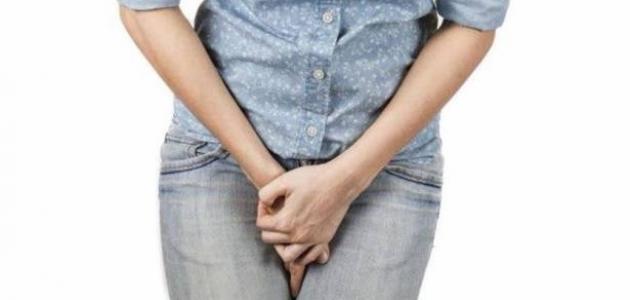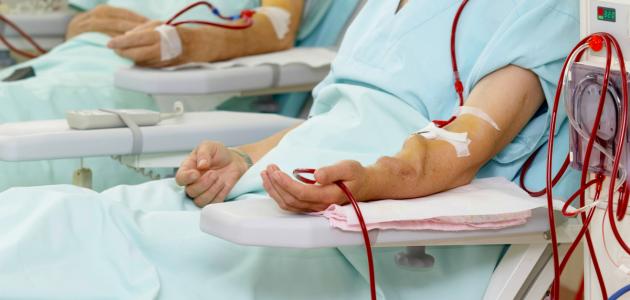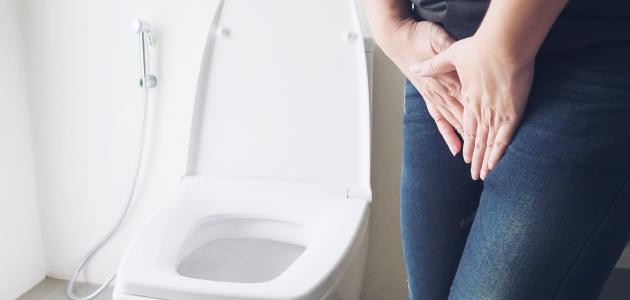Kidney stones treatment
There are many factors that the doctor takes into consideration when determining the appropriate treatment for people with kidney stones, kidney stones, or kidney stones (in English: Kidney stone). Among them: the size of the stones formed, the nature of the symptoms that appear on the affected person, and whether they have caused a specific blockage, in addition to the nature of the materials that make up them. For example, in cases where the stones are small and do not cause a blockage; Treatment depends mainly on taking painkillers in addition to drinking large amounts of water to facilitate the passage of stones and their excretion through urine. However, if the stones are large or cause a specific blockage in the urinary tract, then the specialist doctor should resort to other treatment options.
Watch and wait
Sometimes stones may pass through the urinary tract without the need for any medical intervention, especially if these stones are small in size. In general, if the stones are small in size and do not cause a complete blockage in the kidneys, and the symptoms that accompany them are tolerable, in addition to the absence of any symptoms. Or signs of infection; In this case, waiting and monitoring the condition for a period ranging from four to six weeks is the best option, and the stones in this case do not pose a threat to the health of the injured person. In general, the waiting period depends on the size and shape of the stones. In the context of talking about the waiting period, it is worth noting that the injured person should drink large amounts of water. Plenty of water and non-alcoholic fluids during this time, in addition to the possibility of taking painkillers that are sold without a prescription if there is no contraindication, and these painkillers include: Non-Steroidal Anti-Inflammatory Drugs, which is ibuprofen. One of its medications, and if the pain is very severe, the doctor can prescribe medications in the form of suppositories or even needles sometimes.
Read also:Causes of frequent urination in men
pharmacological treatments
There are a group of medicinal options that can be used in some cases of kidney stones, especially if these stones are calcium stones. Some of these medications limit or reduce the chance of new stones forming, and some of them help dissolve the stones and pass them out through the urine, especially if they are Small in size, and it is worth noting that the use of these medicinal options must be done in addition to drinking abundant amounts of water, in a way that makes the urine very light, and among these medicinal options we mention the following:
- Thiazide and similar diuretics: It is possible to use thiazide diuretics or indapamide - which is one of the similarities to these diuretics - in some cases of kidney stones. Such medications cause a decrease in the excretion of calcium through the urine, thus reducing the chance of new calcium stones forming.
- Potassium citrate: (English: Potassium Citrate): These medications are used in some cases in which the urine is acidic, or in some cases along with thiazide diuretics as an effective supportive option.
- Allopurinol: (English: Allopurinol), this medication is usually used in cases where kidney stones are of the type of uric acid stones or if there is a high percentage of uric acid in the urine, as in such cases this medication is effective in preventing the formation of new stones from this type. Type.
- Alpha blockers: (English: Alpha-Blockers), medications belonging to this group can be used in some cases of kidney stones, and they can be replaced with medications belonging to the group of calcium channel blockers (English: Calcium Channel Blockers) in some cases, and it is worth noting that these medications are the most effective. In cases where the size of the kidney stones does not exceed 10 mm, in addition to the absence of infection or injury to the kidneys by any other problem, and also if the pain is well controlled, in fact this type of treatment option helps the stones pass through the urine quickly, and thus reduces The chance of complications arising. In some cases, the doctor may resort to using this treatment when the stones are somewhat large, for about a month before turning to other treatment options.
Read also:Harmful effects of dialysis
Lithotripsy using shock waves from outside the body
The technique of breaking up kidney stones with shock waves from outside the body (in English: Extracorporeal Shock Wave Lithotripsy) is known by this name because the principle of its work is based on the use of shock waves from outside the human body aimed at breaking up the stones into small pebbles that are easy to pass through the urinary tract and exit the body through Urine, despite the few complications that may result from this technique and the lack of need to stay in the hospital for a long time after undergoing this procedure; However, it is not considered the best option in all cases of kidney stones. As for the procedure for performing it, x-rays, The abdomen, either under the influence of sedatives, or under the influence of local anesthesia. Although this procedure is considered painless, the fragmentation of the stones into a smaller size may be somewhat painful, and the duration of this procedure usually ranges between thirty to sixty minutes, depending on the size of the stones, and it is possible for the person concerned to leave the hospital within a few minutes. Hours after which the stones are often expelled through the urinary tract, but in some cases it may be necessary to re-apply this procedure or resort to another treatment option. In the context of this discussion, it is indicated that people who suffer from obesity or overweight may need a medical treatment procedure. Mostly after undergoing this procedure, because excess fat limits the possibility of identifying stones with certainty.
Read also:Treatment of kidney sandIt is worth noting that this technique is most often used in cases where the size of the stones ranges between 4 mm and 2 cm. It should be noted that it cannot be used in the following cases:
- pregnancy; This is because X-rays and ultrasound imaging may harm the fetus.
- Suffering from problems related to bleeding or blood clotting.
- Urinary tract infections, kidney infections, or kidney cancers.
- There is a defect in the function or structure of the kidneys.
Cystoscopy and ureteroscopy
The procedures known as cystoscopy and ureteroscopy are performed under local or general anesthesia in the hospital, and the good news is that the person concerned does not need to stay in the hospital for a long time. He can leave on the same day, and as for the principle of these procedures; Cystoscopy involves the use of a special scope that is inserted through the urethra and into the urinary bladder, through which any stones present in the urethra or urinary bladder can be detected. As for ureteroscopy, it is done using a special scope that is usually thinner than the cystoscope and longer, and is inserted Through the urethra to the ureters and kidneys, these procedures are not only diagnostic, but also therapeutic. The stones are broken up when viewed endoscopically or disposed of.
Percutaneous extraction of kidney stones
Percutaneous nephrolithotomy is used in cases where the stones cannot leave the body. In other words, it is most often resorted to if the stones are large in size or if the method of endoscopy and lithotripsy with shock waves from outside the body fails. Getting rid of kidney stones. As for the mechanism of percutaneous kidney stone extraction, it begins with preparing the person concerned in a special room, where ultrasound, The person concerned is awake but without feeling any pain, and then they go to the operating room where the procedure is performed under general anesthesia, so the injured person is asleep and does not realize what is happening around him. Meanwhile, the specialist doctor makes an incision in the back to reach the urinary bladder through a tube. Then to the kidneys, then he uses a special tool to break them up, and when they reach the appropriate small size, they are removed during the procedure and then sent to the laboratory for analysis. The doctor may leave a drainage tube for the kidneys, and the injured person may need to stay in the hospital for a day or two in most cases. After four to six weeks, the doctor may request that the patient undergo an X-ray or ultrasound scan to check the success of the procedure and try to find out the reason that led to the formation of stones in order to avoid them in the future.
After undergoing this procedure and leaving the hospital, it is worth following some tips, which are summarized below:
- Avoid carrying, pushing, or even pulling heavy objects for a period of two to four weeks, but it is worth noting that it is possible to return to work a week after undergoing this procedure.
- Monitor the kidney drainage tube in the event of any blood clot or bleeding. If any of these signs appear, you should immediately visit the emergency room.
- See a doctor if you feel chills or have a fever; These symptoms may be evidence of the development of an infection.
- See a doctor if you feel any severe pain that does not respond to the pain-relieving medications prescribed by the specialist doctor.
open surgery
Resorting to open surgery to get rid of kidney stones is extremely rare, and if resorted to, it is done under anesthesia, with the specialist doctor making an incision in the abdomen or side to reach the kidney in order to extract the stones, and in the meantime a catheter is used. Or a catheter to remove urine. It is worth noting that this surgical option is only used in very few cases, the most important of which are the following:
- The size of the gravel is very large.
- One of the stones causes an obstruction in the urethra.
- The infected person suffers from a urinary tract infection or bleeding.
- The stone may cause obstruction of the urethra.
- Other treatment options fail to solve the problem.
It is worth noting that the option of open surgery may require the injured person to stay in the hospital for a period ranging from four to nine days, and in most cases the injured person is able to regain his ability to practice his normal life activities with the passage of one to one and a half months, and it is worth remembering the necessity of seeing a doctor immediately. If the pain becomes severe, or if you suffer from nausea or vomiting, or if any sign of infection appears, such as redness or swelling of the area surrounding the wound.
Parathyroid surgery
The thyroid gland is located in the neck below the Adam's apple, and next to the thyroid gland there are four small glands known as parathyroid glands. In fact, the parathyroid glands secrete a hormone also known as parathyroid hormone, and this hormone is primarily responsible for controlling With calcium levels in the blood, it is worth noting that the parathyroid glands may suffer from enlargement, tumor, or any other health problem that causes excessive production of its hormone, and this prevents the ability to control calcium levels in the blood as required, and that a high level of calcium in the blood may cause The problem of kidney stones, or at least increases the chance of suffering from them. In such cases, the cause must be treated to prevent the kidney stones from continuing to form. If the cause is an enlargement or tumor of the parathyroid glands, the specialist doctor relies on making an incision in the neck to remove the gland. Enlarged or abnormal. This procedure is performed under general anesthesia. The injured person may need a few days or perhaps weeks to recover. The duration of recovery generally depends on the general health of the injured person and his age. In general, the injured person needs one to two weeks to be able to resume his normal life.
Prevention of kidney stones
There are a set of tips that should be provided to people in general, and those at risk of suffering from kidney stones in particular, and among these tips we mention the following:
- Drink sufficient amounts of water, equivalent to six to eight cups of water per day. Drinking a sufficient amount of water can be inferred by monitoring the color of urine. Pale or light-colored urine indicates this, while dark-colored urine indicates dehydration in the body.
- Limiting salt intake, because it causes fluid retention in the body, thus increasing the chance of suffering from dehydration, and this in itself increases the chance of developing kidney stones. It is worth knowing that the Food and Drug Administration recommends not eating... More than a teaspoon of table salt per day.
- Maintaining a healthy weight and losing excess weight. It is worth noting the necessity of losing excess weight correctly and by following a sound diet.
- Limit the intake of foods and drinks containing caffeine, including coffee, chocolate, and energy drinks. In general, it is recommended that the amount of caffeine consumed daily does not exceed four cups.
- Eat foods rich in calcium regularly, and in moderation. Although calcium stones are considered the most common type of kidney stones, consuming appropriate amounts of calcium contributes to reducing the incidence of kidney stones.
